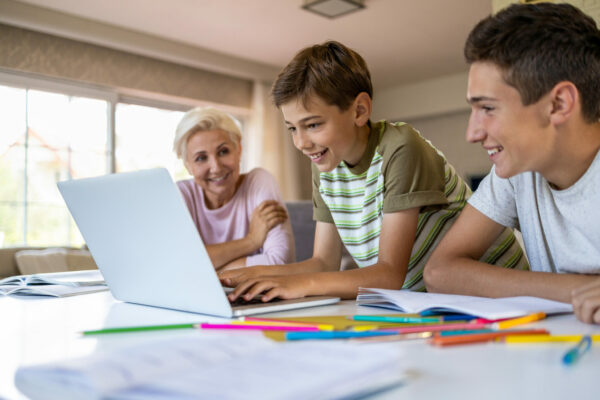How to be eSafe
The ubiquity of technology has impacted our lives in ways we could not have foreseen.With technology having far-reaching well-being, social and legal ramifications for our children, it is essential that we are aware of what our sons may experience online and find ways to keep them safe.
A recent survey by the Royal Children’s Hospital (2021) found that the top health concern of parents is the amount of time their teens spend online. The second top concern was cyberbullying and bullying, and the third was internet safety.
Time spent online
While Australian Government National Guidelines recommend that children aged five to 17 years have no more than two hours of sedentary recreational screen time per day, recent research by CommonSense (2021) media found that teenagers are, on average, spending over 8.5 hours on screens per day, in addition to the time spend on screens for schoolwork. Among other things, this has a serious impact on attention and focus which is crucial for learning.
Negative online experiences
Research released by the Australian e-safety Commissioner (2021) found 44% of Australian young people have had a negative online experience in the past six months. These include being contacted by a stranger, bullying, receiving inappropriate content and being deliberately excluded by from social groups.
Violent and sexualised content
While there is legislation in Australia that is intended to restrict the access of young people under 18 to pornography and other age-inappropriate online content, research suggests that a majority of nine to 16 year olds access pornography regularly. There are many negative implications to frequent exposure to online pornography including reinforcement of negative gender stereotypes and unrealistic or unsafe expectations of sex and sexual partners.

What can we do?
Parents’ role in relation to regulating their young person’s technology is a constant grind. Many of us feel we are in a constant battle with our children to get them off their screens. And we wish there was a quick and easy fix. But there isn’t. Here are some suggestions:
- Set boundaries around appropriate technology usage. These might be around times (no screens after 9.00pm, or while eating), or place (no phones or computers in bedrooms). These rules will be different for different families and may be modified as children get older.
- Remind them that reckless or even thoughtless online behaviour can lead to long-lasting real-life repercussions. Encourage them to get in the habit to stop and think before they ‘like’ something or send it on.
- Show them how to set their social media settings to private and to block people they do not know.
- Encourage them to check that any photos they upload do not have anything recognisable, such as school uniforms, street names etc. Be aware of your own posts on social media.
- You should have their passwords and an agreement that you will use them when necessary. This is different to snooping. You can assure them that you will only check when you are concerned. Remember: their right to privacy does not outweigh their right to safety.
- Discourage them from meeting people they have met online in real life. This is common when young people buy things online and meet at train stations etc to exchange the goods.
- Consider installing Familyzone or other internet filters for younger children.
- Finally, reassure them that they can come to you when things go wrong, even if they are at fault.
In our experience, conversations around technology with teenagers can get heated. Be open. Listen. Be informed. Be empathetic. Admit that you are still learning and that your main priority is keeping them safe. And remember: right place, right time!
Kristen Molloy
Associate Head of the Crowther Centre, Literacy and Engagement

